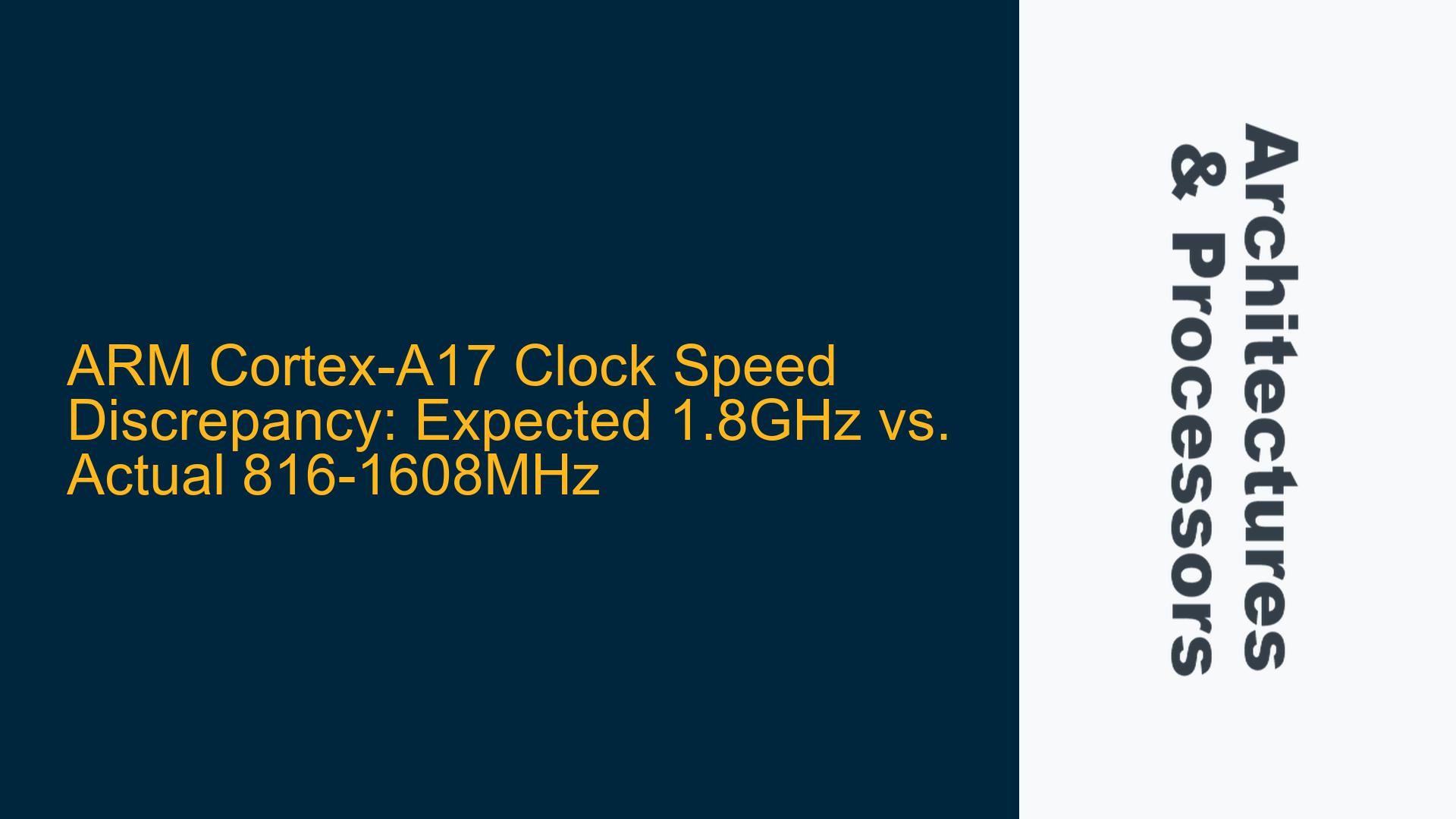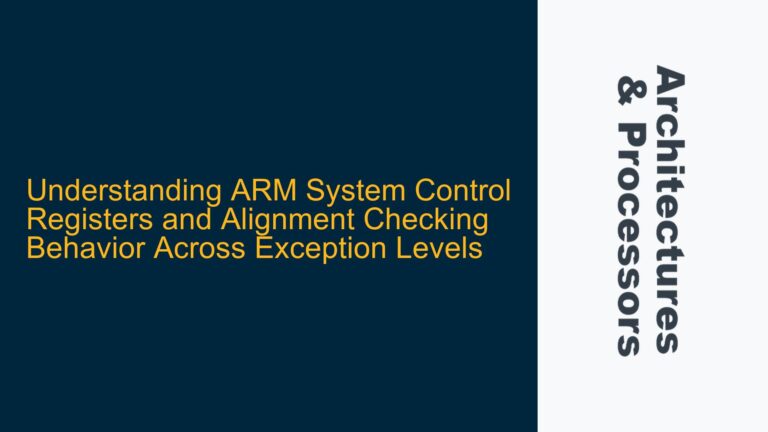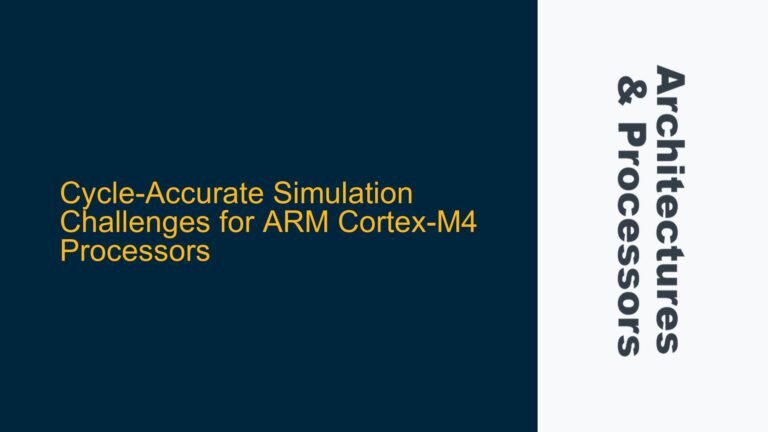ARM Cortex-A17 Clock Speed Specification Mismatch
The ARM Cortex-A17 is a mid-range processor core designed for high-performance embedded systems, often used in applications such as digital signage, smart TVs, and automotive infotainment systems. According to the official specifications, the Cortex-A17 is capable of operating at a maximum clock speed of 1.8GHz. However, in some implementations, users have observed that the actual clock speed varies between 816MHz and 1608MHz, significantly lower than the advertised maximum. This discrepancy can lead to performance issues, particularly in applications that rely on the processor’s ability to handle high computational loads efficiently.
The Cortex-A17 is part of ARM’s big.LITTLE architecture, which pairs high-performance cores with energy-efficient cores to balance power consumption and performance. The clock speed of the Cortex-A17 is typically managed by a Dynamic Voltage and Frequency Scaling (DVFS) mechanism, which adjusts the frequency and voltage based on the workload to optimize power efficiency. However, the observed clock speed range suggests that the DVFS mechanism or other system-level configurations may not be functioning as intended, leading to suboptimal performance.
In addition to the DVFS mechanism, the clock speed of the Cortex-A17 can be influenced by several factors, including the thermal design of the system, the power supply, and the firmware or operating system settings. For example, if the system is not adequately cooled, the processor may throttle its clock speed to prevent overheating. Similarly, if the power supply is insufficient or unstable, the processor may not be able to sustain its maximum clock speed. Furthermore, the firmware or operating system may impose clock speed limits to conserve power or meet specific performance targets.
To diagnose and resolve the clock speed discrepancy, it is essential to understand the underlying causes and systematically troubleshoot the system. The following sections will explore the possible causes of the clock speed mismatch and provide detailed troubleshooting steps to identify and fix the issue.
Thermal Throttling, Power Supply Issues, and Firmware Configuration
The discrepancy between the expected and actual clock speeds of the ARM Cortex-A17 can be attributed to several factors, including thermal throttling, power supply issues, and firmware or operating system configuration. Each of these factors can independently or collectively impact the processor’s ability to operate at its maximum clock speed.
Thermal throttling occurs when the processor’s temperature exceeds a predefined threshold, causing the clock speed to be reduced to prevent overheating. The Cortex-A17, like many high-performance processors, generates significant heat during operation, particularly when running at high clock speeds. If the system’s cooling solution is inadequate or if the ambient temperature is high, the processor may not be able to sustain its maximum clock speed. In such cases, the DVFS mechanism will lower the clock speed to reduce heat generation, resulting in the observed clock speed range of 816MHz to 1608MHz.
Power supply issues can also impact the clock speed of the Cortex-A17. The processor requires a stable and sufficient power supply to operate at its maximum clock speed. If the power supply is unstable or insufficient, the processor may not be able to maintain its maximum clock speed, leading to performance degradation. This can occur if the power delivery network (PDN) is not properly designed or if the power supply unit (PSU) is unable to provide the required current. Additionally, voltage droops or spikes can cause the processor to reduce its clock speed to avoid instability or damage.
Firmware and operating system configuration can also play a significant role in determining the clock speed of the Cortex-A17. The firmware or operating system may impose clock speed limits to conserve power or meet specific performance targets. For example, the system may be configured to prioritize energy efficiency over performance, resulting in lower clock speeds. Additionally, the firmware or operating system may include power management policies that limit the clock speed based on the workload or system conditions. In some cases, these policies may be overly conservative, leading to suboptimal performance.
To identify the root cause of the clock speed discrepancy, it is essential to systematically analyze each of these factors. The following section provides detailed troubleshooting steps to diagnose and resolve the issue.
Diagnosing Thermal Throttling, Power Supply Stability, and Firmware Settings
To address the clock speed discrepancy in the ARM Cortex-A17, a systematic approach is required to diagnose and resolve the underlying issues. This involves analyzing the thermal design, power supply stability, and firmware or operating system configuration. The following steps provide a comprehensive guide to troubleshooting and fixing the issue.
Thermal Throttling Diagnosis and Mitigation
The first step in diagnosing thermal throttling is to monitor the processor’s temperature during operation. This can be done using hardware monitoring tools or software utilities that provide real-time temperature readings. If the temperature exceeds the processor’s thermal threshold, the clock speed will be reduced to prevent overheating. To mitigate thermal throttling, it is essential to ensure that the system’s cooling solution is adequate for the processor’s thermal design power (TDP). This may involve improving the heatsink design, increasing airflow, or using more efficient thermal interface materials.
In addition to improving the cooling solution, it is also important to optimize the system’s thermal management policies. This may involve adjusting the fan speed curves, reducing the processor’s voltage, or limiting the maximum clock speed to reduce heat generation. However, these measures should be carefully balanced to avoid compromising performance.
Power Supply Stability Analysis and Improvement
To diagnose power supply issues, it is necessary to analyze the stability and adequacy of the power delivery network (PDN). This can be done using oscilloscopes or power analyzers to measure the voltage and current supplied to the processor. If the power supply is unstable or insufficient, the processor may not be able to maintain its maximum clock speed. To improve power supply stability, it may be necessary to redesign the PDN, use higher-quality capacitors, or upgrade the power supply unit (PSU).
In addition to improving the power supply, it is also important to optimize the processor’s voltage regulation. This may involve adjusting the voltage regulator module (VRM) settings or using dynamic voltage scaling (DVS) to reduce power consumption and improve stability. However, these adjustments should be made with caution to avoid compromising the processor’s performance or reliability.
Firmware and Operating System Configuration Review
To diagnose firmware or operating system configuration issues, it is necessary to review the system’s power management policies and clock speed settings. This can be done by examining the firmware or operating system documentation, or by using software utilities that provide detailed information about the system’s configuration. If the system is configured to prioritize energy efficiency over performance, it may be necessary to adjust the power management policies to allow higher clock speeds.
In addition to adjusting the power management policies, it may also be necessary to update the firmware or operating system to the latest version. This can help to resolve any bugs or issues that may be impacting the processor’s performance. Additionally, it may be necessary to modify the system’s boot configuration or kernel parameters to optimize the clock speed settings.
Implementing Data Synchronization Barriers and Cache Management
In some cases, the clock speed discrepancy may be related to data synchronization issues or cache management. The Cortex-A17, like many ARM processors, uses a cache hierarchy to improve performance. However, if the cache is not properly managed, it can lead to performance bottlenecks. To address this, it may be necessary to implement data synchronization barriers (DSBs) or cache maintenance operations to ensure that the cache is properly synchronized with the main memory.
Additionally, it may be necessary to optimize the cache configuration to improve performance. This may involve adjusting the cache size, associativity, or replacement policy to better match the workload. However, these adjustments should be made with caution to avoid compromising the system’s stability or performance.
Conclusion
The clock speed discrepancy in the ARM Cortex-A17 can be attributed to several factors, including thermal throttling, power supply issues, and firmware or operating system configuration. To diagnose and resolve the issue, it is essential to systematically analyze each of these factors and implement appropriate solutions. By improving the thermal design, power supply stability, and firmware or operating system configuration, it is possible to achieve the expected clock speed and optimize the processor’s performance.






